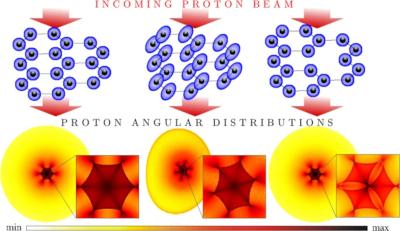Researchers from the Vinča Institute of Nuclear Sciences, University of Belgrade, Serbia, recently examined the rainbow scattering of photons passing through graphene and how it reveals the structure and imperfections of the material.
While other methods to examine the defects of graphene exist, these have drawbacks. For instance, Raman spectroscopy can not distinguish some defect types, while high-resolution transmission electron microscopy can characterize crystal structure defects with outstanding resolution, but the energetic electrons it uses can degrade the crystal lattice.
"The rainbow effect is not that rare in nature. It was discovered in scattering of the atoms and molecules as well. It was detected in ion scattering experiments on thin crystals. We have theoretically studied a scattering of low energy protons on graphene and demonstrated that rainbow effect occurs in this process as well," research author Milivoje Hadžijojić says. "Furthermore, we have shown that graphene structure and thermal vibrations could be studied via proton rainbow scattering effect."
Using a process called rainbow scattering, the team observed the diffraction they took as this passed through the graphene and the "rainbow" pattern created.
Characterizing the diffraction pattern, the researchers found perfect graphene gave a rainbow pattern in which the middle part was a single line with the inner part demonstrating a pattern with hexagonal symmetry, a symmetry that was absent in imperfect graphene.
The scientists also concluded that specific defect types produce their own distinct rainbow patterns, and this could be used in future research to identify and characterize defect types in a graphene sample.
"Our approach is rather unique and could potentially serve as a useful complementary characterization technique of graphene and similar two-dimensional materials," Hadžijojić says.
